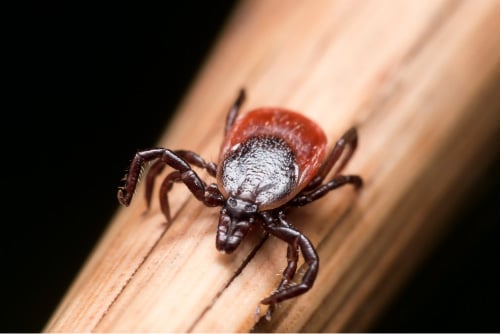Growing concern: tick-borne pathogens expand their reach
Ticks and tick-borne diseases (TBDs) are a growing global problem for human health. Currently, 18 tick-borne infectious pathogens, 20 conditions, and 13 illnesses are known to result from tick bites, and more continue to be identified. Why are we seeing new pathogens and new epidemics? Several factors are improved detection of unknown tick-borne viruses, changes in climate such as milder winters, and human action, including deforestation.
Focused on solutions for tick-borne diseases
According to the CDC, U.S. tick-borne disease cases have increased 25% in recent years. In 2021, the agency reported that an analysis of health insurance claims data determined the actual number of Lyme disease cases alone is ten.
NIFA, one of four agencies comprising the USDA’s Research, Education, and Economics (REE) mission area, funded a project involving researchers in more than 23 states. This collaborative project brings together scientists with diverse expertise to study multiple tick species over more expansive geographic areas, ensuring consistent monitoring, outreach, and control efforts. The group has created new practices, tools, and prediction models and developed tests to detect exposure to ticks and pathogens they can transmit.
The National Institutes of Health developed the NIH Strategic Plan for Tickborne Disease Research in 2019 to focus on five strategic priorities for more effective prevention, diagnosis, and treatment of TBDs. One of the five priorities is advancing research to improve diagnoses, including research for rapid diagnostics and multiplex platform approaches that detect multiple tick-borne pathogens.
Changing enemy
Until the early 1970s, U.S. research of ticks and tick-borne diseases focused on Dermacentor ticks and their associated pathogens, such as spotted fever group rickettsiae, the tularemia agent Francisella tularensis, Colorado tick fever virus, and tick paralysis caused by a toxin in tick saliva. When the 1980s arrived, so did Lyme disease, which shifted focus to two species of Ixodes ticks that are the primary vectors of Borrelia burgdorferi sensu stricto in North America.
Ixodes scapularis continues to be a concern because of its geographical expansion in the eastern half of the country, the steady increase in reported Lyme disease cases, its transmission of an encephalitis virus (Powassan), and the growth of two additional associated diseases (anaplasmosis and babesiosis).
The rise of babesiosis
Lyme disease is the most reported tick-borne illness in the U.S., but another is growing. A 2023 CDC report shows that babesiosis is taking hold in 10 Northwestern and Midwestern states. It’s likely a greater risk than the numbers show since babesiosis is not reportable in all states, and patients with nonspecific symptoms might not be tested. Babesia microti is the most common transfusion-transmitted pathogen. Often undetected, babesia infections can range in severity from asymptomatic to life-threatening.
Babesiosis is caused by intraerythrocytic babesia parasites, primarily transmitted through tick bites. Transmission also happens congenitally or from blood transfusions or organ transplants. People who develop babesiosis through contaminated blood have worse health outcomes and a higher risk of death than those who develop the disease from a tick bite. The FDA recommends blood donation screening for babesiosis in 14 states and the District of Columbia.
Early detection
Late last year, we introduced the ACCURUN® Babesia Positive Molecular Control Kit in response to the growing use of PCR assays for babesia in clinical diagnostics and blood donor screening. The sensitivity of molecular PCR testing has been shown to detect early and chronic infections better than other methods.
Our newest product is a ready-to-use quality control solution designed to measure the day-to-day performance of babesia molecular assays. It includes whole-organism positive materials, negative materials, and a lysis buffer for use with in vitro diagnostic tests.
The kit’s patient-like matrix is formulated in human whole blood with cryoprotectant and the low-positive controls challenge assay performance at critical decision points. It features two of our QC materials' hallmarks: stability (minimum two years at frozen temperatures) and lot-to-lot consistency (manufactured under cGMP and ISO 13485 conditions).
More options to detect tick-borne disease
Our full complement of tick-borne disease-related validation and qualification materials and quality control products challenge your assay and offer greater confidence in your lab’s results. Plus, they help you stay compliant with regulatory requirements.
Trust your results
As tick populations expand into new areas, new tick-borne bacterial and viral pathogens are being recognized, and advances in detecting them continue to improve. Our controls are some of the most respected in the industry and are relied upon by many world-class laboratories to ensure assay performance.
Improve confidence in your test results. Find out how our extensive catalog can support your lab.
800-676-1881 • CDx-sales@lgcgroup.com


